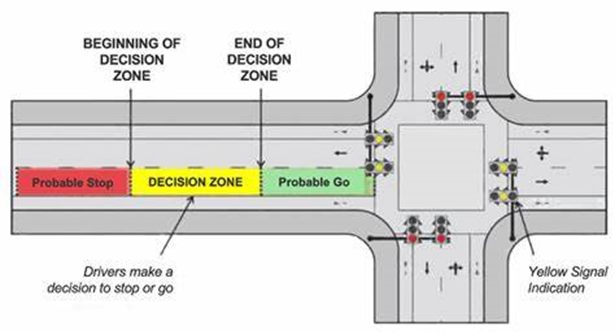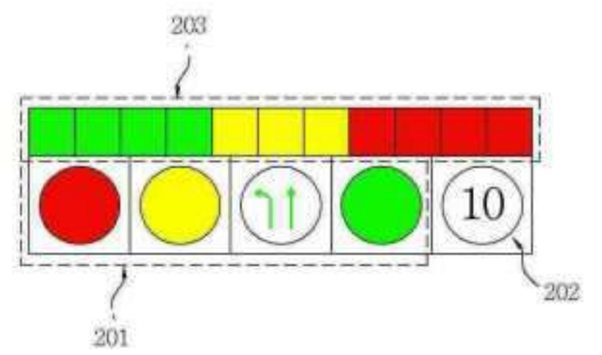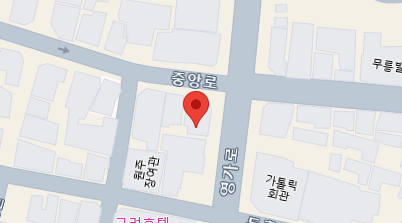1. Traffic accident
In Korea, there is something called the "Minsik Law." After the accident of Kim Minsik (then 9 years old) who died in a traffic accident in a school zone in Asan, South Chungcheong Province in September 2019, the "Amendment to the Act on the Aggravated Punishment, etc. of Specific Crimes" was proposed. The gist of the bill is that if a child dies, they are subject to at least 3 years in prison, and if they are injured, they are subject to at least 1 year but not more than 15 years in prison or a fine of at least 5 million won but not more than 30 million won.
Why do traffic accidents happen?
The causes of traffic accidents can be diverse, including driver negligence such as speeding, reckless driving, and running red lights; the victim’s negligence due to driving on a crosswalk, sudden changes in behavior, and accidents due to unavoidable circumstances such as bad weather such as rain or snow.
1.
A large truck… is coming from afar. It spots a car waiting at a traffic light and suddenly slams on its brakes, but the truck skids endlessly, sweeping away the stopped cars.
2
If the traffic light turns yellow right before entering an intersection, the Korean Supreme Court ruled that it was a traffic signal violation(?), and a truck carrying cargo cannot stop, which is out of sync with the actual driving environment.
In particular, large truck accidents… Is there no way to prevent them?
According to the Korea Transportation Safety Authority, the number of truck accidents in the past five years was 138,557, with 4,366 deaths and 207,849 injuries due to truck accidents during the same period.
In order to prevent accidents involving trucks that have difficulty braking suddenly, increasing the number of yellow traffic lights in the dilemma zone can improve visibility and prevent accidents. A red signal change prediction traffic light can extend the time of multiple traffic lights, allowing for more braking time, and multiple traffic lights can be read from a distance, allowing for early braking.
It usually takes 0.3 seconds to recognize danger and 0.45 seconds for braking distance, a total of about 0.75 seconds, and this increases in proportion to the square of the vehicle speed. Assuming 50 km/h, the stopping distance is about 32 m (stopping distance 14 m + braking distance 18 m), and the braking distance is 1.5 times longer on rainy roads and about 3 times longer on icy roads. If only we could predict this 0.75 to 1.5 seconds in advance... the problem would be solved.

In the case of Taeho Co., Ltd.'s patented 'Red Light Change Prediction Traffic Light' , it is a time control technology that increases the dilemma zone by 0.75 to 1.5 seconds to allow all vehicles, including trucks, to have a longer risk recognition time and braking distance.
2. Introduction of patented technology
The present invention relates to a 'signal change predictive traffic light device'.
When displaying the signal status of a traffic light installed on a road with the 'system}' , the driver can predict the remaining time of the green signal in advance and decide in advance whether to stop the vehicle.
The present invention relates to a signal change predictive traffic light device capable of doing so.
[Problem to be solved] The present invention relates to a control unit that controls the indicator lights of auxiliary traffic lights to turn on and off at predetermined time intervals, and the control unit is characterized in that when the display signal of the main traffic light is turned on as a green signal or a green signal and a left turn signal, a plurality of indicator lights of the auxiliary traffic lights are all turned on with the same green color, and the green signals of the plurality of indicator lights of the auxiliary traffic lights are gradually turned off one by one to prevent vehicles from entering the intersection on the road a predetermined time before the driving signal of the main traffic light changes, and when the green signals of the auxiliary traffic lights are all turned off, the main traffic light turns on with a yellow signal, and when the yellow signal is turned off, the main traffic light turns on with a red signal.

The present invention has the effect of preventing the risk of traffic accidents by informing drivers so that they can predict the change from a green signal to a yellow signal, and can prevent sudden stops that frequently occur when a signal changes due to failure to predict the change in signal in advance, thereby preventing unnecessary overconsumption of fuel in a car due to sudden stops.
In addition, the auxiliary traffic lights have the effect of allowing drivers to predict the remaining time of the green signal and the change of the yellow signal, which is a preliminary stop signal, in advance, as if multiple main traffic lights were installed.
3. Marketability
According to the Ministry of SMEs and Startups' 'SME Strategic Technology Roadmap 2023-2025', the global Intelligent Transportation System (ITS) market is expected to grow from approximately USD 22.91 billion in 2021 to USD 35.8 billion in 2026, at an average annual growth rate of 9.34%. In Korea, the Intelligent Transportation System (ITS) market is expected to reach KRW 2.4507 trillion in 2026.
If this signal change prediction traffic light patent technology is implemented in stages, it will be possible to commercialize it stably in an exclusive market.
Mission: A challenge for traffic light control technology through big data analysis, etc.
※ Taeho Co., Ltd. will strive to ensure that this patented technology can be applied to artificial intelligence inference and big data analysis IT technology.
Taeho Co., Ltd. is recruiting investors and joint production and sales partners for this patented technology.
☑ Export ☑ OEM/ODM ☑ Branch or Localization
TEL : +82-54-852-8090
E-mail : h8090@naver.com or mail@markethub.org











